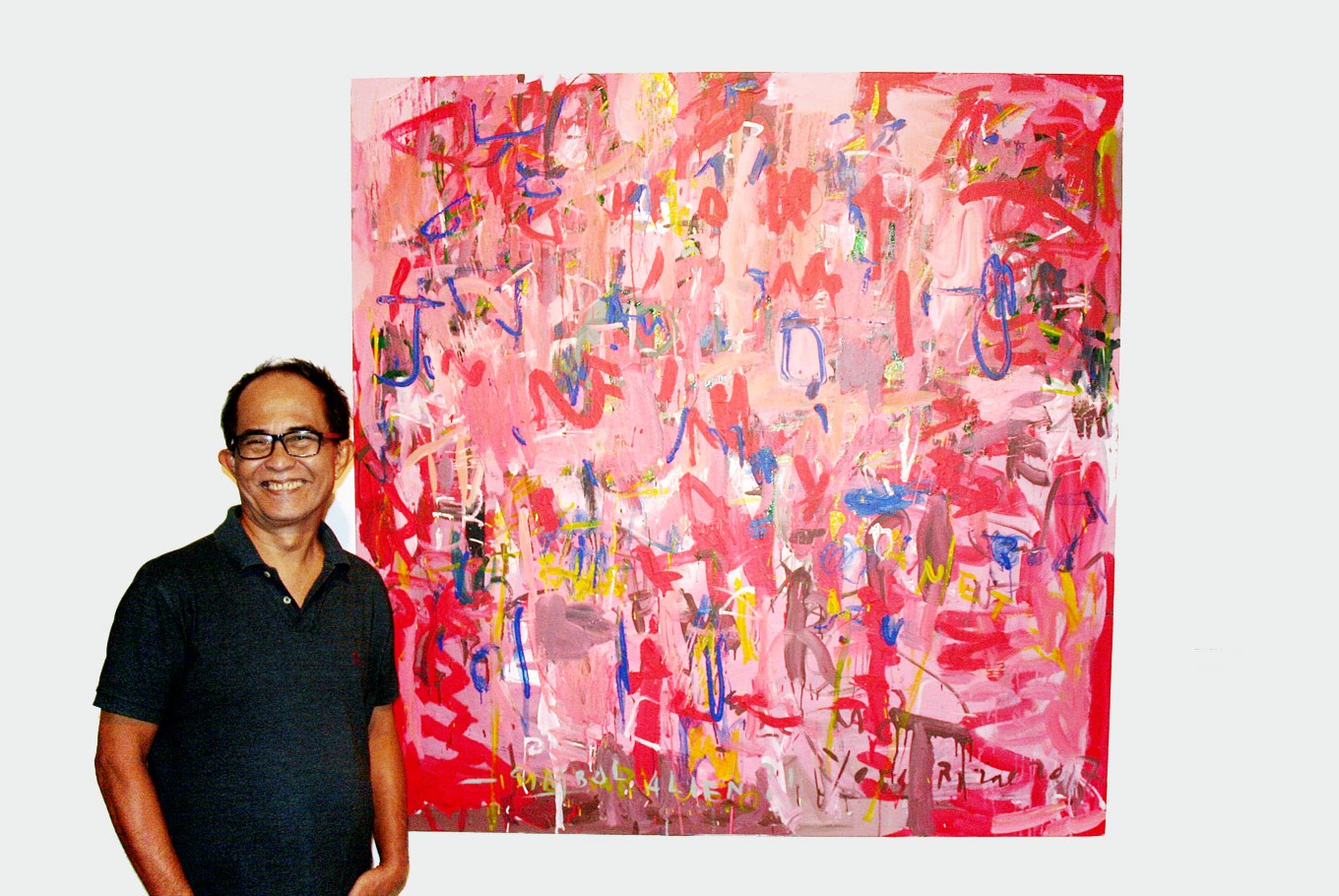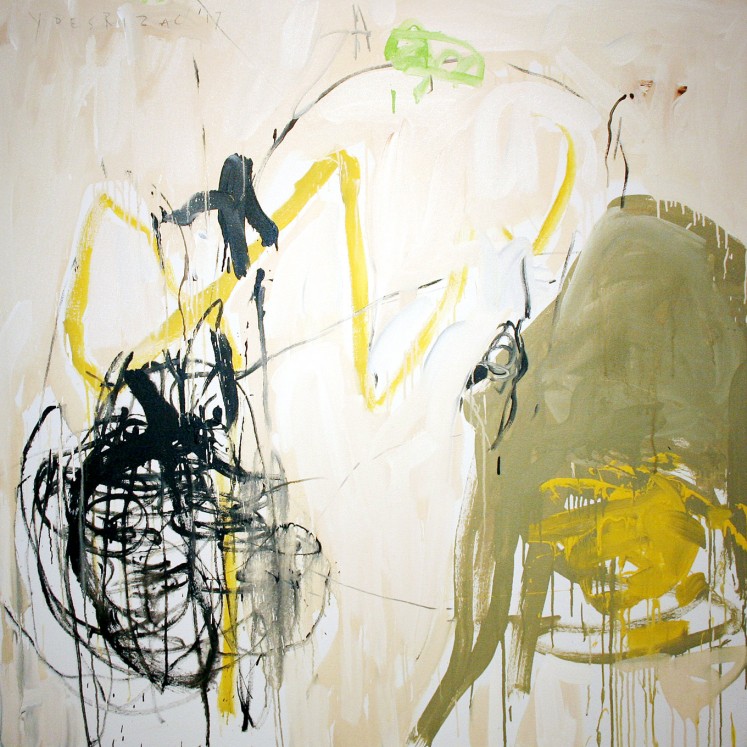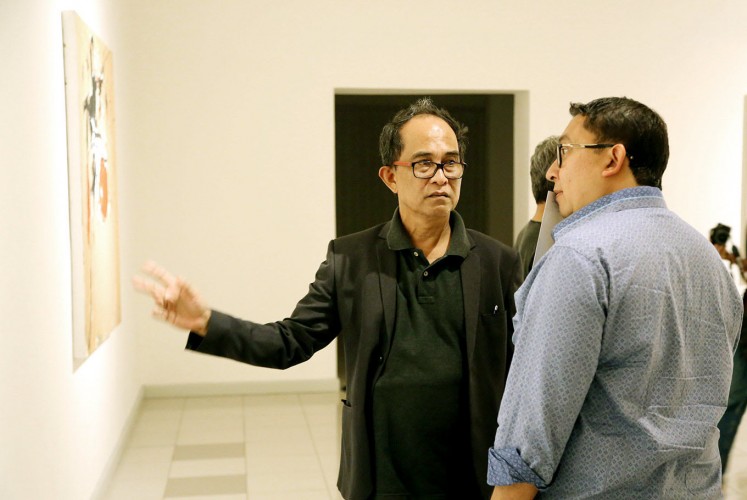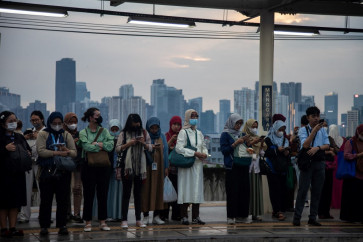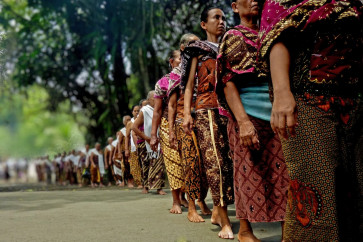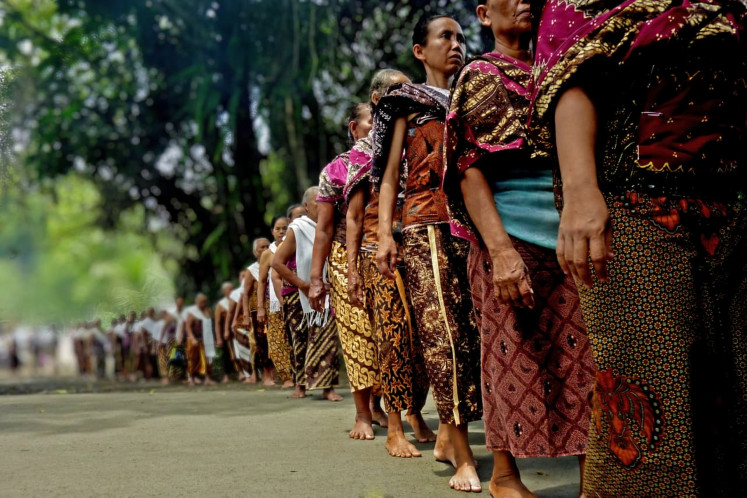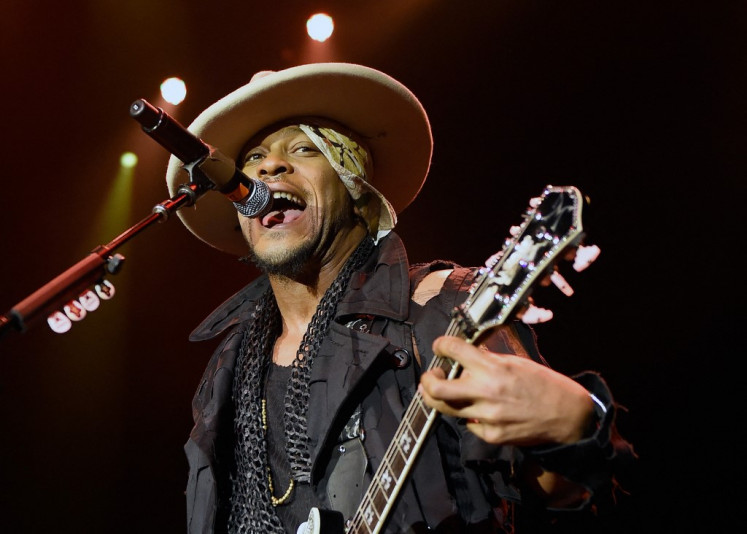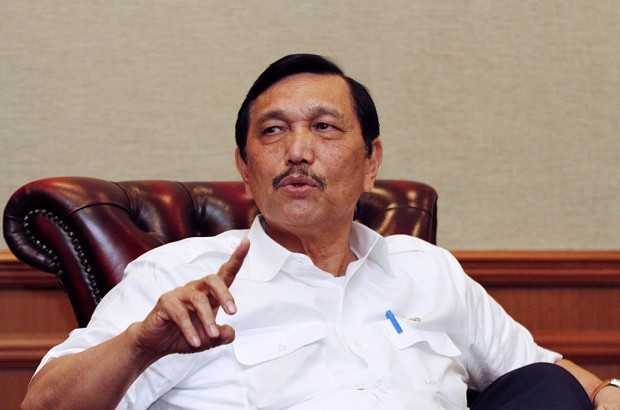Popular Reads
Top Results
Can't find what you're looking for?
View all search resultsPopular Reads
Top Results
Can't find what you're looking for?
View all search resultsYoes Rizal: Keeping art as art and nothing more
Change text size
Gift Premium Articles
to Anyone
As an artist, Yoes Rizal is internationally renowned and a text book expressionist.
Yoes rejects the notion that art artwork can be explained in relation to a single message or story, believing such explanations to be posturing.
“My work is not final, that’s the problem. The idea is not ending at this size. It has to be continued, it’s a process,”Yoes told The Jakarta Post during his exhibition opening at the National Gallery in Central Jakarta on Feb 9.
Titled Pop-up/Meletup, the exhibit features 25 paintings of Yoes and will run until Feb. 22.
Exhibition curator Mahmud Dzafce described Yoes’ paintings as being comparable to what he imagined it would be like to see a loud “voice” or speech in physical form.
Dzafce described the subjects of Yoes’ paintings as “thoughts […] presented in lines, spots, and colors, always clashing each other like the reflection of sound vibes in a room.”
Scribbles N Massive Forms by Yoes Rizal (JP/Reuben Wylie)Yoes said art was art, adding that it’s not a medium for social or political or cultural problems. He believes that visual art as a medium is primarily an expression of an artist’s appreciation for colors and shapes as dictated by their eyes and motivated by internal feelings.
“I think the best art comes from your heart. It is very direct, there is no handicap to express yourself by the abstractionist style, especially the expressionism style,” Yoes said.
The explanations Yoes gives his paintings are always short and told only in relation to the aesthetic processes he was following while painting, such as a specific shape or squiggle that caught his eye.
Born in Palembang, South Sumatra, on April 24, 1956, Yoes’ embedment as an artist in the ideologies of abstract expressionism could be tied to his time spent studying at the Bandung Institute of Technology’s (ITB) School of Art, from which he graduated in 1985.
Back then, the artists of Bandung, West Java, were greatly appreciative of abstract art. The practices and especially the ideals of Bandung’s abstract art traditions were contrary to the modernist art traditions of Yogyakarta artists, many of which were embedded in leftist and anti-regime ideals.
Meet the collector: Painter Yoes Rizal (left) chats during his solo exhibition opening with House of Representatives Deputy Speaker Fadli Zon from the Gerindra Party at the National Gallery. Fadli is a well-known enthusiastic art collector. (National Gallery/File)The two cities have been associated with a bitter rivalry partly owing to their conflicting ideals concerning art and artist the profession, in which the Yogyakarta modernist’s perceived visual art to be a definite medium for political protest and that artists had a responsibility in representing their society “truthfully” or even onto itself.
Yoes himself believes his artwork to be unsuitable to many modern Indonesian audiences, claiming that Indonesian audiences prefer art work with simplistic ideas or to have ideas readily explained to them.
“In the Indonesian market, I think now mostly they like to see something clearer, something solid and final,” he said.
“I think people who view my paintings are very quiet. I don’t think the audience likes to ask me questions because I have already given them the answer. There are no stories behind my paintings.”

